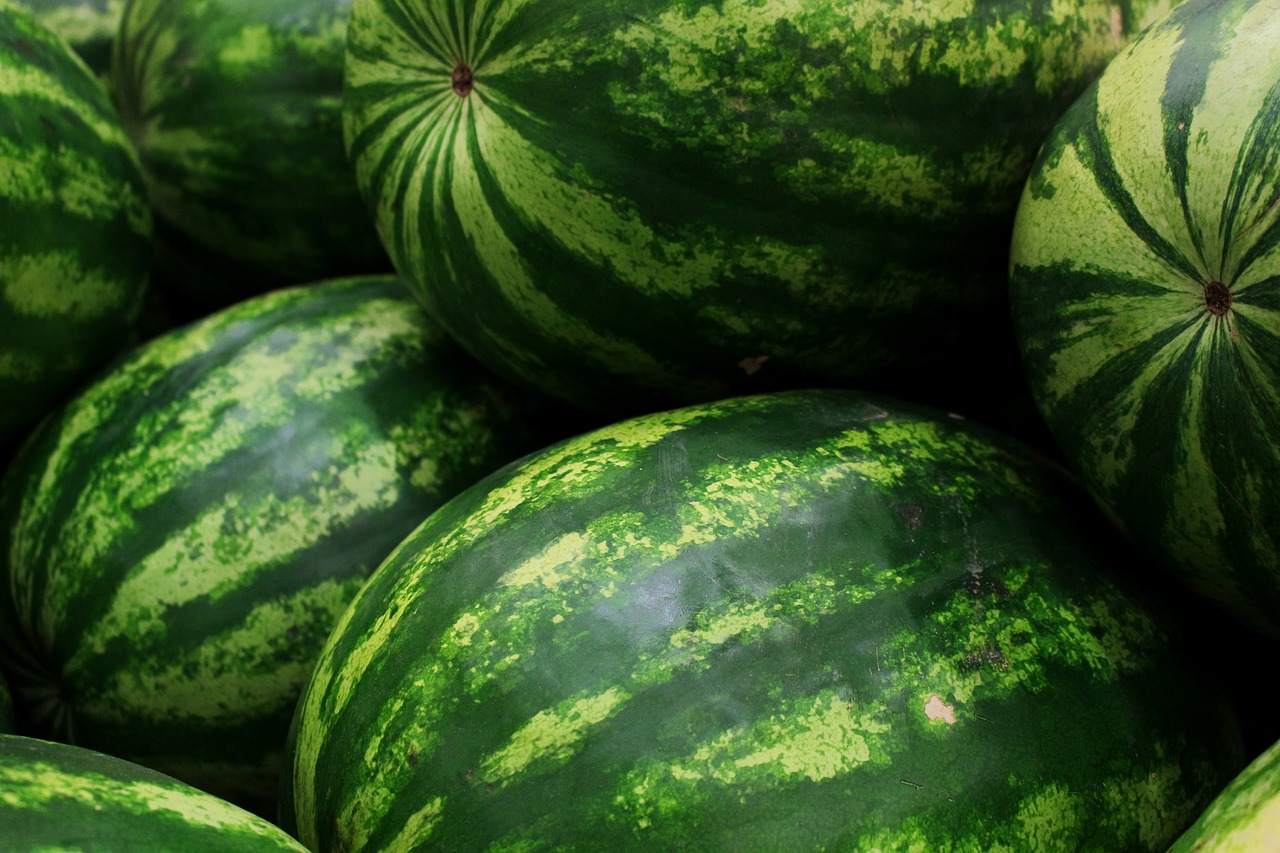Watermelons are a quintessential summer fruit, loved for their refreshing taste and hydrating qualities. Choosing the right watermelon can make all the difference between a sweet, juicy delight and a disappointing, bland experience. While it might seem daunting at first, picking a ripe and flavorful watermelon is easier than you might think. Here are ten tips to help you select the perfect watermelon every time.
How to Pick a Watermelon?
1. Check the Field Spot
The field spot is the area where the watermelon rested on the ground while growing. A ripe watermelon will have a creamy yellow or golden field spot. This indicates that the fruit stayed on the vine long enough to ripen fully. If the spot is white or greenish, it means the watermelon was picked too early and may not be as sweet.
When you find a watermelon with a prominent field spot, it’s a good sign that the fruit has had ample time to develop its sugars and flavors. Avoid watermelons with no field spot or those with a very light one, as these are likely to be under-ripe.
2. Inspect the Skin
The skin of a watermelon can tell you a lot about its ripeness. Look for a watermelon with a dull, not shiny, rind. A shiny rind indicates that the watermelon is underripe. Additionally, the skin should be free of major dents, bruises, or cuts, which can be signs of mishandling or overripeness.
Feel the texture of the rind as well. It should be firm and slightly rough. If the skin is smooth and too soft, the watermelon may be overripe and mushy inside.
3. Tap the Watermelon
Tapping the watermelon and listening to the sound it makes can give you a clue about its ripeness. A ripe watermelon will produce a deep, hollow sound, similar to a drum. This indicates that the fruit is full of water and at its peak ripeness.
On the other hand, a dull or flat sound when tapping can mean the watermelon is overripe or underripe. Practice makes perfect with this method, so don’t be afraid to tap a few before making your selection.
4. Pick It Up
Weight is another indicator of a watermelon’s ripeness. A good watermelon should feel heavy for its size, meaning it is full of water and well-hydrated. Compare the weights of similar-sized watermelons, and opt for the heaviest one.
A heavy watermelon is a juicy watermelon. If it feels light for its size, it might not have developed fully and could be less sweet and more watery in taste.
5. Look for Uniform Shape
Watermelons come in various shapes, including round and oval. Regardless of the shape, a ripe watermelon should have a uniform form. Irregularities can indicate inconsistent growth and may affect the texture and flavor of the fruit.
A uniformly shaped watermelon is likely to have grown evenly, resulting in a more consistent taste throughout. Avoid those with lumps or irregularities, as these can be signs of issues during the growing process.
6. Examine the Color
The color of a watermelon can also indicate its ripeness. A ripe watermelon should have a consistent green color, with dark green stripes or patterns. The green should be rich and deep, not faded or too light.
Avoid watermelons with a pale overall color or those with an excessive amount of white streaks. These signs often indicate that the fruit was picked too early and hasn’t had enough time to develop its full flavor.
7. Check the Tail
The tail or stem of the watermelon can give you a hint about its ripeness. A dried and brown tail indicates that the watermelon was allowed to ripen on the vine before being harvested. A green tail suggests that it was picked prematurely and might not be as sweet.
While the tail isn’t the only factor to consider, it can be a helpful additional indicator of ripeness. Combine this with other signs to make the best choice.
8. Feel the Texture
Feeling the texture of the watermelon’s rind can help you determine its ripeness. A ripe watermelon will have a slightly rough and firm texture. It should not be overly smooth or soft to the touch, which can indicate overripeness.
Additionally, press gently on the rind; it should not yield to pressure. A firm texture suggests that the fruit inside is crisp and ready to eat, rather than being mushy.
9. Look for Sugar Spots and Webbing
Sugar spots and webbing (the brown, web-like patterns on the rind) are good indicators of a sweet watermelon. These marks are signs that sugar has seeped out of the fruit, indicating high sugar content and therefore a sweeter taste.
While not all watermelons with webbing will be sweet, it’s generally a good sign. The more webbing and sugar spots, the higher the likelihood of a sweet and flavorful watermelon.
10. Buy in Season
Watermelons are best when they are in season, typically from May to September in most regions. Buying watermelons during this peak season increases your chances of getting a ripe and tasty fruit, as they are more likely to have been grown and harvested under optimal conditions.
Out-of-season watermelons might not have the same quality or sweetness since they could have been imported or grown in less favorable conditions. Always try to purchase watermelons during their peak season for the best flavor and texture.
By following these tips, you can increase your chances of picking a delicious, ripe watermelon that will be the highlight of your summer gatherings. Happy watermelon hunting!

